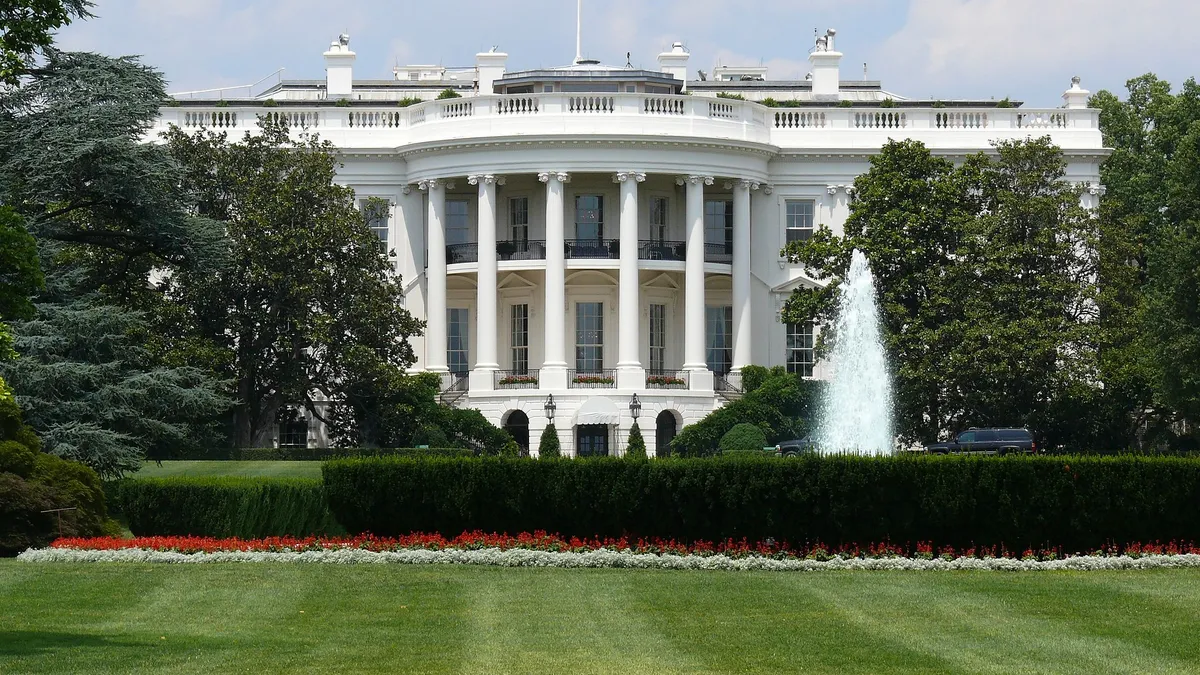Housing wasn’t a major talking point on the campaign trail during the 2016 election, especially in comparison to 2008, when the mortgage finance crisis captured headlines. And so, the homebuilding industry knows little yet about how President-elect Donald Trump plans to address its pain points, including high housing costs and limited inventory, a high regulatory environment and a shortage of qualified labor — if at all.
"It’s a miss for both campaigns that they didn’t talk about housing," said Jim Tobin, chief lobbyist at the National Association of Home Builders in Washington, DC. "When we talk about jobs or the American Dream or the middle class, we should be talking about housing. It’s where jobs go home at night."
Trump positioned himself before the industry as a fellow builder, touting his experience in development, bent on reducing the regulations meant to reform housing finance in the wake of the market’s crash in 2008 that have instead increased the cost to build, he said.
Trump’s unpredictability, however, makes a realization of those claims less certain once in office. Will he repeal Dodd-Frank and maintain the Mortgage Interest Deduction, as he’s said he will? And will he be as friendly to the Republican-led House and Senate as would be expected from a President-elect who ran on the Republican ticket? Writing for Bloomberg, Jesse Hamilton and Elizabeth Dexheimer explain that nothing is certain.
Still, Trump has resonated with many U.S. homebuilders. "Our membership felt very strongly that Donald Trump was going to win," Tobin said. "Talking to a lot of them across the country over the last months, his message was resonating outside the Beltway." Trump cemented his victory over Clinton in the key Democratic firewall states of Pennsylvania, Wisconsin, Michigan and Ohio, where the housing market has been slow to recover.
"There are a lot of factors that go into how the vote played out," said Andrew Goldberg, managing director for government relations and outreach at the American Institute of Architects. "But I don’t think it’s unreasonable to think that part of it is the perception in a lot of those Rust Belt communities that the policies from Washington have not served them well and have left them behind."
Regulations
Trump has taken aim at regulations, such as those targeting flood-risk management, saying they've raised construction costs and made it difficult for builders to offer affordable prices to the key, cost-sensitive demographic of first-time buyers as well as to meet inclusionary housing requirements while maintaining profitable margins. Regulatory costs at the local, state and federal levels account for nearly one-quarter of a home’s selling price, according to a May 2016 report from the NAHB. Development expenses account for the largest share — 14.6% — of the total regulatory cost.
The 24.3% cut is largely on par with the NAHB’s 2011 estimates of regulatory costs accounting for 25% of a home’s purchase cost, but prices have skyrocketed nearly 30% since, the report found. Those costs typically include utility hookups and stormwater regulations, as well as delay-related interest payments, building permits, implementing worker safety regulations and simply meeting code for items like fire sprinklers and carbon monoxide alert systems.
"Regulation has grown exponentially over the last decade or so and it’s one of the more significant factors holding back the volume of construction," said Jonathan Smoke, chief economist for real estate listing website Realtor.com.
A revision of the Waters of the U.S. Rule under the Clean Water Act published last summer by the U.S. Environmental Protection Agency and the Army Corps of Engineers has faced backlash amid claims of overreach on behalf of the government agencies and that, industry groups like the NAHB say, is driving up the cost to build as a result. Trump has said he’d eliminate the rule.
Regulations related to hiring may also be revisited, including the new overtime rule and the joint employer rule. "Things that would increase the cost of hiring workers will likely see some new debate and examination," said NAHB Chief Economist Robert Dietz.
Housing finance
Many Republicans want to reduce or eliminate government-backed lenders Fannie Mae and Freddie Mac. It’s unclear yet whether Trump would support that move, and some speculate he’d recapitalize the program instead. The economists that Construction Dive spoke with speculate that the role of government-financed lenders, who have been in a receivership position through the recession and recovery, may come to a head.
Trump has also said he’d roll back parts of the Dodd-Frank Wall Street Reform and Consumer Protection Act, contending that the compliance costs associated with the reform-minded legislation are holding up the financing and development of new construction, as well as individual mortgages, and keeping many smaller, community banks out of the construction lending game.
Republicans have long been pressing for tax reform, and with a Republican majority in Congress and Trump in the White House, they’re likely to get some version of it. Trump has said on the campaign trail that he would protect the Mortgage Interest Deduction, something homebuilding industry advocates have said is key to making housing affordable and available. Trump’s calls to reduce individual tax rates could raise the standard deduction, economists say, thereby cutting the number of taxpayers claiming itemized deductions on items like the Mortgage Interest Deduction, among others.
Still, the Republican Congressional caucus may not be completely united, and they have only a slight majority in both houses, so getting Democratic buy-in will be key to passing any legislation related to housing.
Tax reform
Trump has said he plans to reduce the corporate tax rate from 35% to 15%, while also cutting rates for pass-through entities — a classification that many homebuilding companies use. While that could improve job creation, MarketWatch reported, it would significantly cut federal revenues.
Trump has also said he’d repeal many business tax credits, and the Low-Income Housing Tax Credit, which assists private-sector builders and developers in providing affordable single- and multifamily housing, could be on the chopping block. "If business tax reform does take place, [we would like to] certainly educate people on the value of the program and see that it gets back in the mix," Dietz said.
The ability for businesses to either deduct interest or immediately write off their capital investments, rather than distributing the write-offs over a period of many years, has also been discussed, which plays to highly leveraged businesses in the construction industry.
Other issues on the table
Meanwhile, Trump’s hard line on immigration raises questions around the future of the skilled-labor shortage in America amid his plans to boost infrastructure spending and construction activity.
Trade, too, is a concern. Trump has said he’d nix the Trans-Pacific Partnership and renegotiate (or exit) the North America Free Trade Agreement, imposing tougher regulations on trading partners, NPR reported. That could cause building material prices to rise, at least in the near term, in a risk-averse market.
Still, residential industry watchers are optimistic. "Housing is the backbone of the American family as well as the American workforce," Tobin said. "We’re hopeful that as Mr. Trump gets his transition into gear, that he’s going to pay a lot of attention to housing to stimulate it so we can reach our full recovery potential in what has been a very sluggish housing recovery."





















